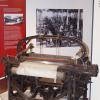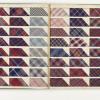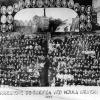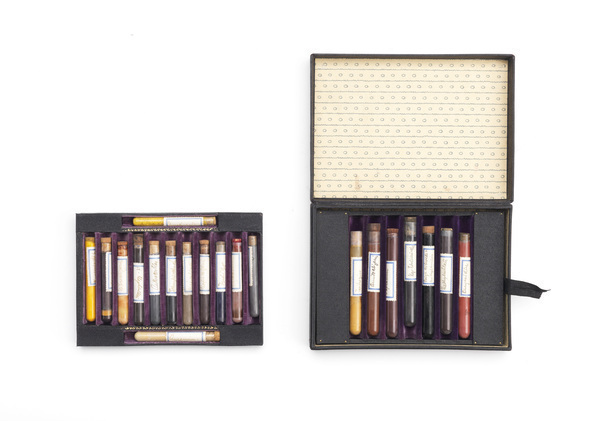Chemical technology: Dyes
In 1856 the British chemist William Perkin found the first method to make synthetic dye from coal tar. This started an industrial revolution within the chemical industry.
During the next decades, synthetic dyes replaced the natural dyes made of tropical plants that had been used by the textile industry for centuries. Great Britain and France dominated the first years of the production of synthetic dyes, but soon German and Swiss chemical plants took over product development as well as production. The Norwegian textile industry imported dyes from Great Britain and Germany.
Until the first technical university (Norges Tekniske Høyskole) was founded in Trondheim in 1910, Norwegian engineers were educated mainly in Germany. Textiles professionals continued this tradition as far as an ongoing textile industry existed in the country. Though there was no production of textile machinery or chemicals like dye in Norway, professionals were needed to run and maintain the factories.
One of the young engineers to be educated was Ove Collett (1885-1970). He graduated from Die Technische Hochschule in Dresden in 1909, specializing in electrochemistry and dyes. His dye samples as well as his papers are preserved at the museum. Ove Collett did not start working in the textile industry, however, but continued his education at MIT (Massachusetts Institute of Technology).
In 1933, he founded the nutrition and vitamin company Collett AS that still produce dietary supplements and baby formula.
 Previous Story
Next Story
Previous Story
Next Story
How to cite this page
Tone Rasch, 'Chemical technology: Dyes', Inventing Europe, http://www.inventingeurope.eu/story/chemical-technology-dyes
Sources
- Nieto-Galan, Agustí. Colouring Textiles: A History of Natural Dyestuffs in Industrial Europe. Boston studies in the philosophy of science 217. Dordrecht: Kluwer Academic Publishers, 2001.
- Rasch, Tone. “Gurkemeie og anilin violet: om overgangen fra naturlige til syntetiske fargestoffer ved Hjula veveri.” In Volund: årbok for Norsk Teknisk Museum, 35-68. Oslo, 2001.
- Travis, Anthony S. From Turkey Red to Tyrian Purple: Textile Colours for the Industrial Revolution. Jerusalem: The Jewish National and University Library, 1993.




















